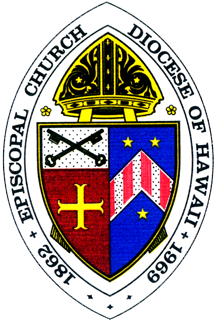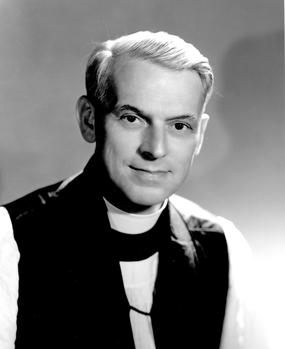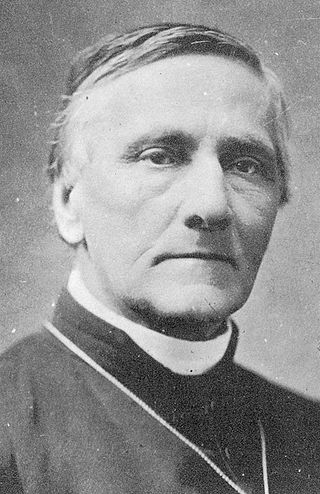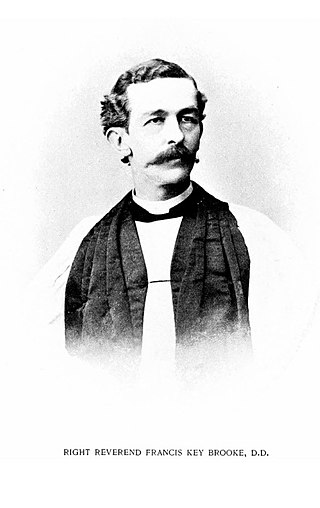Related Research Articles

St. Mark's Episcopal Cathedral in Seattle, Washington, is the seat of the bishop of the Episcopal Diocese of Olympia. St. Mark's was founded as a mission church of Trinity Parish Church.

The Episcopal Diocese of Hawai'i is the ecclesiastical territory or diocese of the Episcopal Church of the Anglican Communion in the United States encompassing the state of Hawaii and Episcopal congregations in Micronesia. It is led by the Episcopal Bishop of Hawaii pastoring the Hawaiian Islands from the Cathedral Church of Saint Andrew in Honolulu.

Philander Chase was an Episcopal Church bishop, educator, and pioneer of the United States western frontier, especially in Ohio and Illinois.

The Diocese of Ohio is part of the worldwide Anglican Communion represented in the United States by The Episcopal Church. It was organized in 1817 and was the first diocese established outside of the original 13 colonies. The first bishop was Philander Chase. Since that time the Diocese has been served by 11 additional bishops. The 12th and current bishop, the Right Reverend Anne B. Jolly was ordained and consecrated as bishop in April 2023.

The Episcopal Diocese of Olympia, also known as the Episcopal Church in Western Washington, is a diocese of the Episcopal Church in Washington state west of the Cascade Range. It is one of 17 dioceses and an area mission that make up Province 8. The diocese started as a missionary district in 1853 and was formally established in 1910.

St. Mary's Episcopal Cathedral, designed by Memphis architect Bayard Snowden Cairns, located near downtown Memphis, Tennessee, is the cathedral church of the Episcopal Diocese of West Tennessee and the former cathedral of the old statewide Episcopal Diocese of Tennessee.
Thomas Casady was the third missionary bishop of Oklahoma and the first diocesan bishop of the Diocese of Oklahoma in the Episcopal Church.

Arthur Carl Lichtenberger was a bishop of the Episcopal Church in the United States. He served as Bishop of Missouri from 1952 to 1959, and as presiding bishop of the Episcopal Church from 1958 to 1964.

The Episcopal Diocese of Southern Ohio is the diocese of the Episcopal Church in the United States of America with jurisdiction over 40 counties in southern Ohio. It is one of 15 dioceses that make up the Province of the Midwest. The offices of the Bishop of Southern Ohio and the cathedral, Christ Church Cathedral, are both located in downtown Cincinnati.
Frederick Lehrle Barry was the fourth Bishop of the Episcopal Diocese of Albany in the United States from 1950 to 1960, during which he re-built a diocese.

Louis Joseph Marie Théodore de Goesbriand was a French-born prelate of the Roman Catholic Church. He served as the first bishop of the Diocese of Burlington in Vermont from 1853 until his death in 1899.

James Reginald Mallett was the third Bishop of the Episcopal Diocese of Northern Indiana.
George Rhys Selway was bishop of the Diocese of Northern Michigan in The Episcopal Church, serving from 1964 to 1972.
Richard Mitchell Trelease Jr. was bishop of the Episcopal Diocese of the Rio Grande, serving from 1971 to 1988.
Quintin Ebenezer Primo Jr. was suffragan bishop of the Episcopal Diocese of Chicago from 1972 to 1985. He also served as interim bishop of the Episcopal Diocese of Delaware from January 1 to November 8, 1986.

Francis Key Brooke was a missionary bishop of what is now the Episcopal Diocese of Oklahoma, serving from 1893 to 1918.
Emerson Paul Haynes was second bishop of the Episcopal Diocese of Southwest Florida, serving from 1975 to 1988.
Warren Lincoln Rogers was bishop of the Episcopal Diocese of Ohio from 1930 to 1938; he had served previously as coadjutor from 1925 to 1930. The Wa-Li-Ro Episcopal Choir Camp was named for him.
Bruce Edward Caldwell is an American prelate of the Episcopal Church who served as Bishop of Wyoming from 1997 to 2010.
Edward Randolph Welles II was the fourth bishop of the Episcopal Diocese of West Missouri, serving from 1950 to 1972.
References
- ↑ "Huston, Simeon Arthur". The Clerical Directory of the Protestant Episcopal Church: 202. 1956.
- ↑ "HUSTON, Rt. Rev. Simeon Arthur". Stowe's Clerical Directory of the American Episcopal Church: 165. 1950.
- ↑ TIME (1934-10-08). "Religion: Trials". TIME. Retrieved 2024-06-15.
- ↑ "WRIT BARS CHURCH OUSTER; Seattle Judge Voids Bishop Huston's Removal of Rector". The New York Times. 1934-10-11. ISSN 0362-4331 . Retrieved 2024-06-16.
- ↑ "Bishop Huston". The Living Church . 147: 5. December 22, 1963.